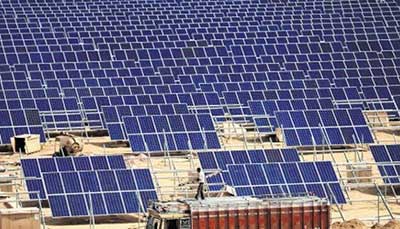Date: 22/02/2023
Relevance: GS-3: Conservation, environmental pollution, and degradation, environmental impact assessment.
Key Phrases: Emissions Trading Scheme (ETS), Energy Conservation (Amendment) Bill, Bureau of Energy Efficiency (BEE), Perform, Achieve, Trade, Greenhouse Gas Mitigation Activities, Carbon Credits.
Why in News?
- India is gearing up to implement an Emissions Trading Scheme (ETS) after the Energy Conservation (Amendment) Bill was passed in December last year.
About the scheme:
- This scheme requires polluting industries to meet certain energy efficiency standards and allows them to trade the improvements.
- The Indian government will specify which sectors will be covered and the targets they need to achieve, which will be announced by June 2023.
- The Bureau of Energy Efficiency (BEE), which is a body under the Power Ministry, will be the nodal coordinator of the scheme.
Energy Efficiency Targets and Trading Credits:
- The ETS will give energy efficiency targets to different sectors such as aluminium, cement, and fertilizer.
- The companies that exceed the targets will receive credits or certificates that they can either sell or bank to companies that do not meet the targets.
- Emissions trading schemes are already in place in the European Union and Korea.
- The BEE has already been implementing a similar scheme called "Perform, Achieve, Trade" since 2015.
- It covers 1,078 industries across 13 sectors that have been receiving energy security certificates if they exceed certain targets.
- However, the credits generated under the new ETS will force companies to invest more in cleaner sources of energy to meet efficiency norms.
A Different Approach to Emissions Trading Schemes:
- One significant difference in the Indian ETS from other countries is that companies will not be required to cut carbon emissions in absolute terms.
- India has committed to reducing the emissions intensity (emissions per unit of GDP) of its GDP by 45% (of 2005 levels) by 2030.
- Therefore, companies under the Indian ETS can increase production and emit more carbon while still being more efficient.
- The EU is required to cut emissions under the provisions of the United Nations Framework Convention on Climate Change, which is not mandatory for India.
Greenhouse Gas Mitigation Activities Eligible for Trading
- To pave the way for the Indian carbon markets, the Environment Ministry recently listed several activities that would be eligible for trading carbon credits.
- These include solar thermal power, offshore wind, green hydrogen, compressed biogas, and stored renewable energy.
Costs of Generating Electricity from Non-Fossil Sources
- India has committed to generating 500 GW of electricity from non-fossil sources by 2030, which will cost at least ₹2.4 trillion, according to the Central Electricity Authority.
- Experts emphasized the need for India to have its own emissions trading scheme structure that accommodates its specific needs while also learning from Western models.
Difference between Carbon Credits and Emissions Trading Schemes:
- Carbon credits are a different scheme from emissions trading schemes.
- In the older scheme, Indian industries installed systems to generate power from renewable energy sources instead of coal, oil, and gas and claimed credits that reflected the emissions that were notionally prevented.
- These credits were sold to exchanges in the European Union where companies were required to offset their emissions with such credits.
- Many companies undertake voluntary offsets to reflect their embrace of clean technology and bank, as well as trade them.
- Carbon credits reflect actually prevented emissions, whereas energy certificates from ETS-like schemes reflect investments by industry in complying with government regulations on curbing emissions.
Domestic ETS as an Instrument for Decarbonisation
- Analysts at the Council for Energy, Environment, and Water (CEEW) called the announcement of the Indian carbon credit trading scheme "pathbreaking."
- They also said that Indian stakeholders should view the domestic ETS as an instrument for decarbonization and domestic climate finance rather than international climate finance.
Way forward:
- Strengthening the regulatory framework:
- Establishing clear rules and guidelines for ETS implementation and monitoring.
- Strengthening penalties for non-compliance and fraud.
- Ensuring transparency and accountability in the trading process.
- Encouraging participation:
- Providing incentives for early adoption and participation.
- Raising awareness among industry stakeholders about the benefits of ETS.
- Offering technical assistance and capacity building to companies that need support.
- Enhancing the credibility of carbon credits:
- Establishing rigorous standards for emission trading to ensure their quality and credibility.
- Ensuring transparency and traceability in the emission trading process
- Creating a market infrastructure:
- Developing a robust market infrastructure for ETS that includes registries, exchanges, and clearinghouses.
- Facilitating access to financing and liquidity for companies participating in ETS.
- Supporting the development of innovative financial instruments to manage risks associated with emission trading.
- Collaboration and international cooperation:
- Engaging in dialogue and cooperation with other countries and international organizations to align ETS policies and standards.
- Leveraging international climate finance and technical assistance to support ETS implementation.
- Promoting knowledge-sharing and capacity-building among countries that are implementing ETS or considering doing so.
Source: The Hindu
Mains Question:
Q. Discuss the potential benefits and challenges of implementing an Emissions Trading Scheme (ETS) as a policy tool to control greenhouse gas emissions in India.






















